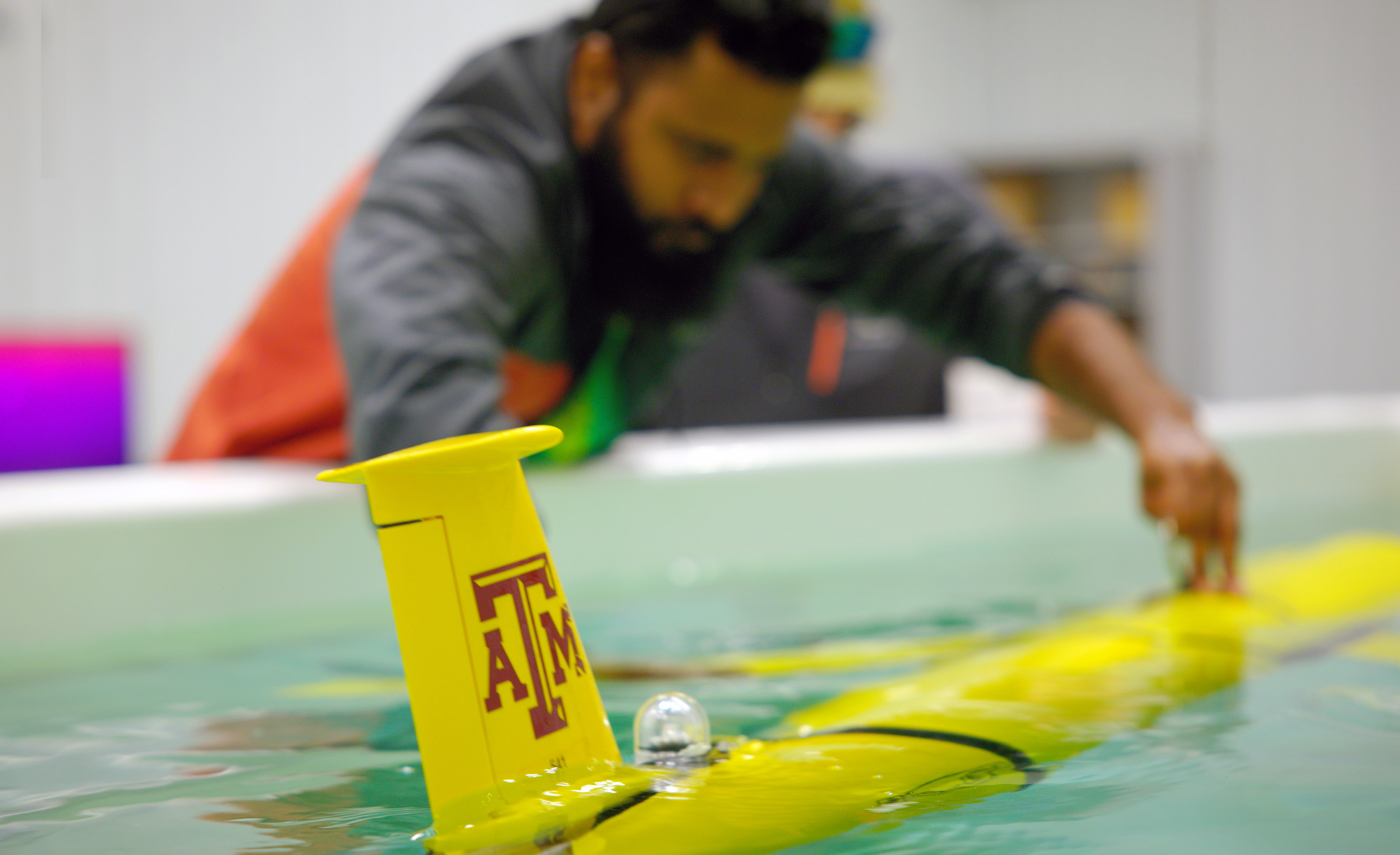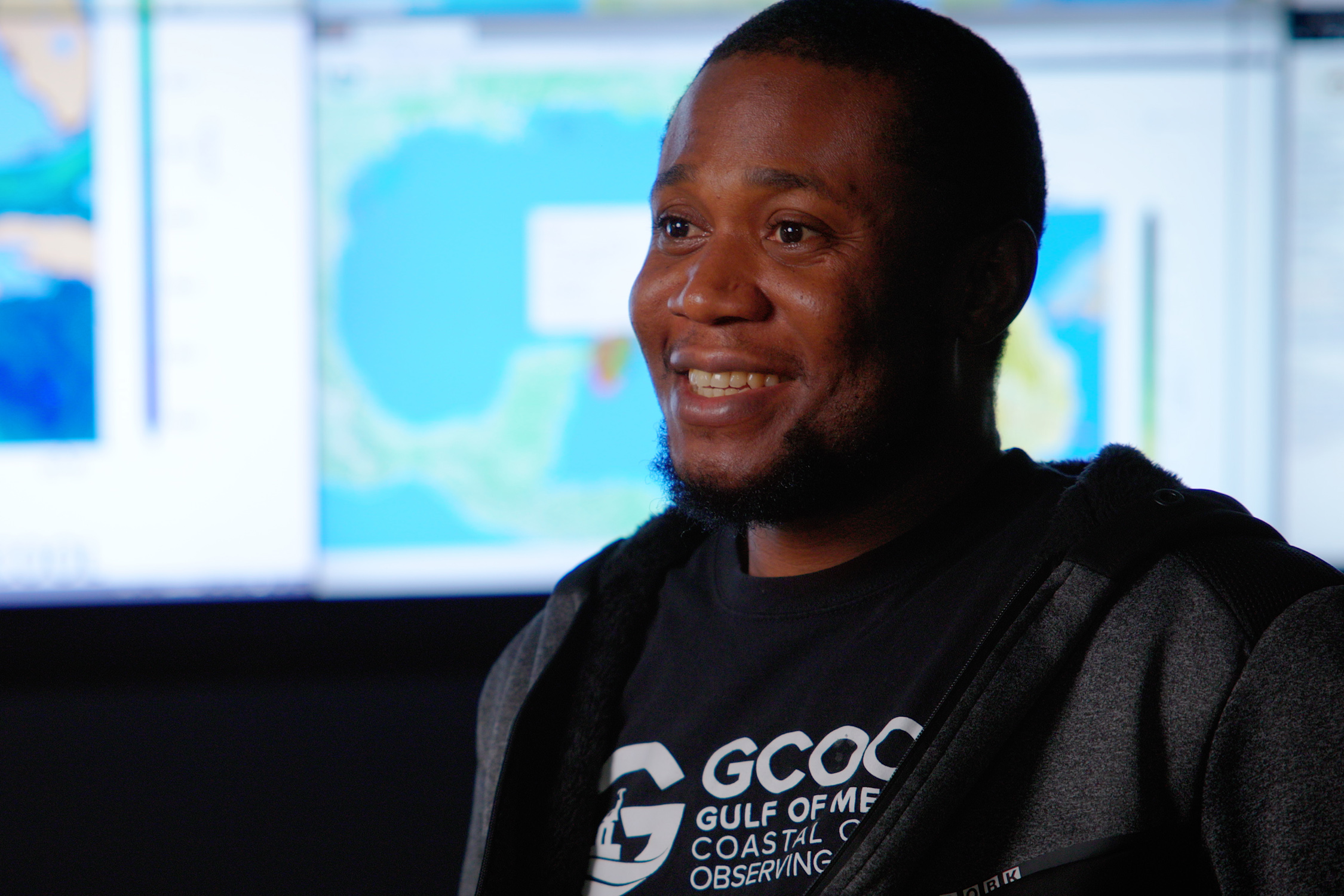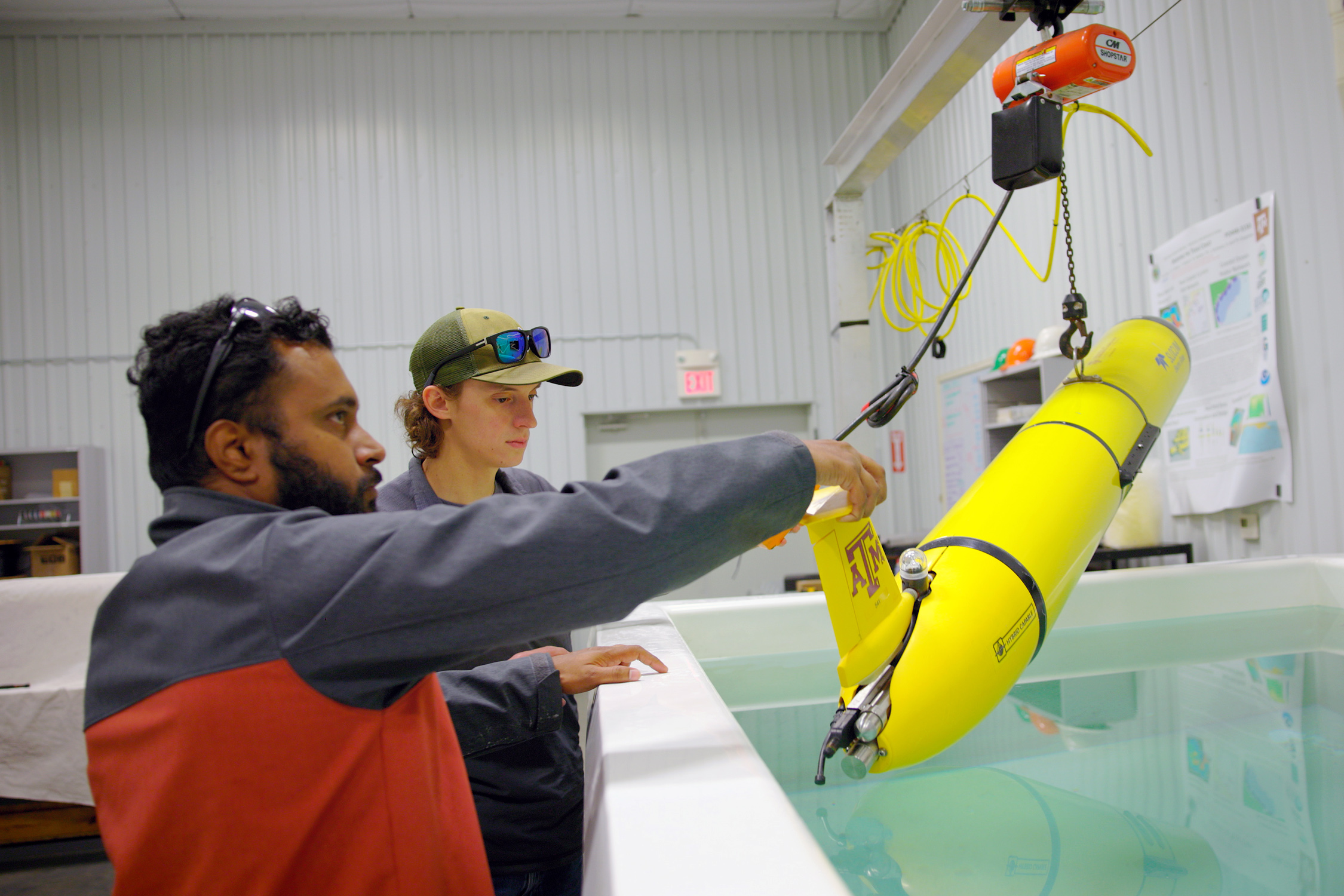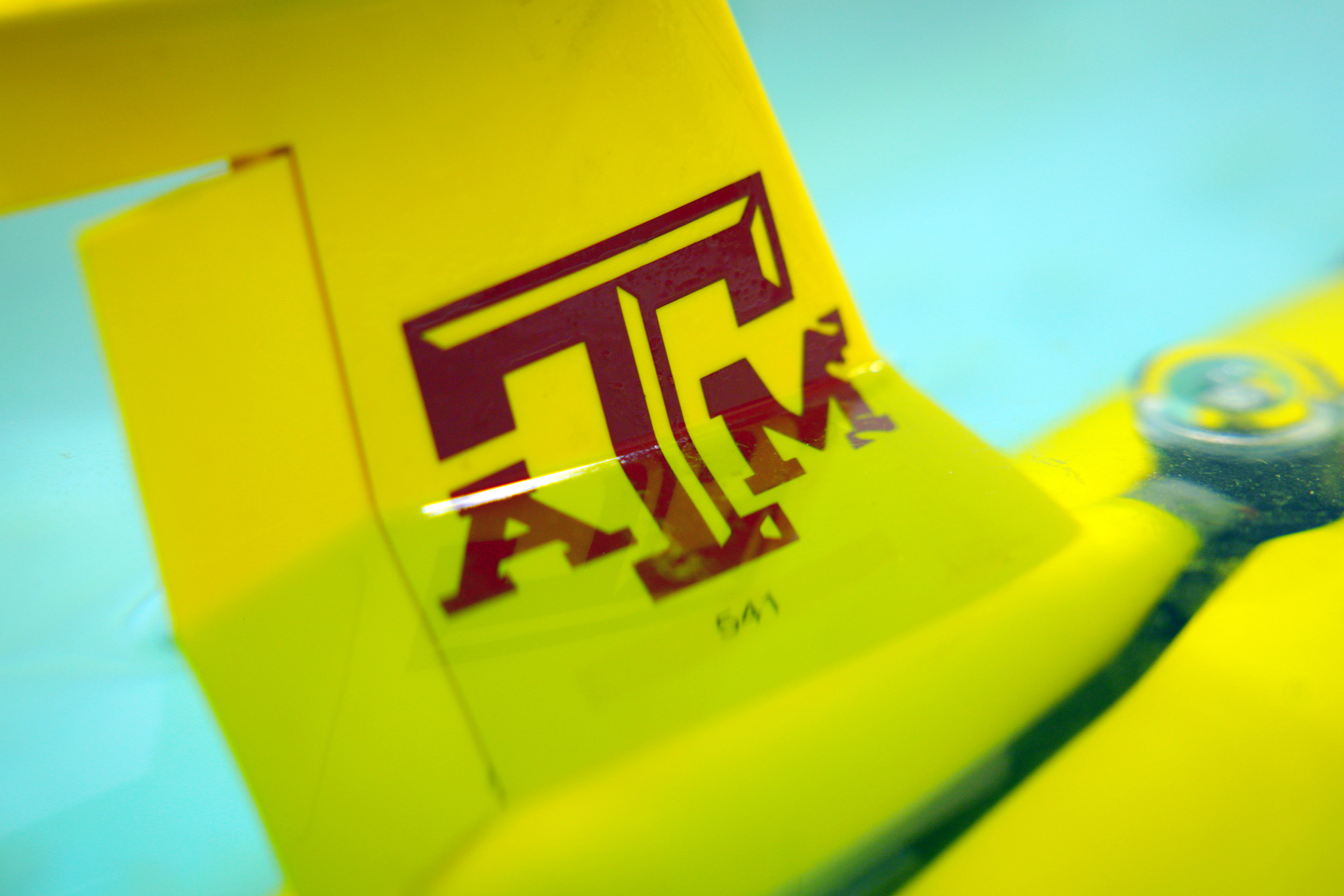
A team of researchers and technicians from the Geochemical and Environmental Research Group (GERG) at Texas A&M University achieved a rare feat in marine research this past fall, successfully retrieving a GERG Slocum buoyancy glider from the depths of the Gulf of Mexico.
GERG assistant research scientist Dr. Uchenna Nwankwo led the October 17, 2023, mission to recover the glider, identified as S/N 307 Howdy. The endeavor also involved GERG electronics technician Donovan Bright and Matthew Smith, a graduate student in ocean science and technology within the Department of Oceanography, GERG intern and Marine Oceanography Student Team member. In addition, GERG Glider Operations Lead postdoctoral researcher Dr. Sakib Mahmud played a crucial role in coordinating shore communications and services to ensure the seamless execution of the recovery operation.

S/N 307 Howdy had been deployed since August 2023, collecting data from the Gulf of Mexico's depths. The glider, owned, piloted and operated by Texas A&M and GERG, carried out its mission until a leak caused it to cease operations and return to the surface. The glider was gathering important data and information related to oceanic conditions and providing crucial insight for a variety of scientific applications.
Key figures in the field also factored into the recovery mission, including Dr. Jorge Brenner, executive director of the Gulf of Mexico Coastal Ocean Observing System (GCOOS); Dr. Anthony Knap, GERG's past director and a research professor in Texas A&M Oceanography who is now retired; and Dr. Steve DiMarco, GERG's current director, observing team lead and a professor in Texas A&M Oceanography who also holds a courtesy joint appointment in the Department of Ocean Engineering. The group's expertise and contributions were instrumental in the success of this initiative, just as they have been in many others during the course of the past four decades since GERG was founded in 1981 as a Texas A&M University System Board of Regents-approved center of excellence conducting basic and applied research for both private and government entities in the fields of ocean science, environmental sciences and resource geosciences.
The actual act of recovering S/N 307 involved Nwankwo embarking on a boat to retrieve the glider, accompanied by Mahmud on shore. Mahmud provided Nwankwo with coordinates reported by the glider, guiding him to its precise location. The retrieval process required careful maneuvering in calm waters to lift the glider on board, ensuring that no damage occurred during the operation.

In the days leading up to and immediately following the GERG Slocum buoyancy glider recovery, Nwankwo also played a pivotal role as an oceanographer with GCOOS in coordinating the near-simultaneous retrieval of two U.S. Navy gliders owned, piloted and operated by the Naval Oceanographic Office (NAVO) Navy Glider Operations Center. Bright, along with fellow GERG Electronics Technician Emily Calder, participated in transporting these gliders ashore.
These deployments are a component of the National Hurricane Glider Initiative, a joint endeavor supported by the National Oceanic and Atmospheric Administration Integrated Ocean Observing System (NOAA-IOOS) and GCOOS-Regional Association that is conducted in collaboration with NAVO. Nwankwo says the data collected is essential for agencies like the National Weather Service and the National Hurricane Center because it significantly enhances the precision of hurricane intensification forecasts.
"The National Hurricane Glider Initiative is not just a scientific endeavor; it's a collaborative effort to enhance our ability to predict and understand the behavior of hurricanes,” Nwankwo added. “The data collected is vital for improving the accuracy of forecasts and, ultimately, for better preparedness in the face of these natural occurrences."
Whether recent or ongoing, GERG’s efforts underscore the importance of collaborative research in unraveling the mysteries of our oceans and enhancing our ability to predict and respond to hurricanes and other natural events that impact our environment and broader society.
Live oceanographic observations by Texas A&M can be viewed online at the Texas Automated Buoy System website as well as at GANDALF.gcoos.org.

